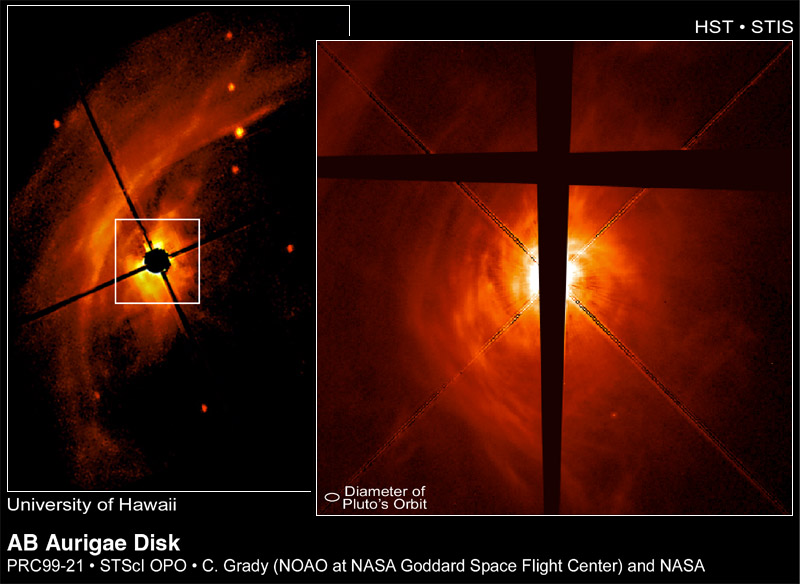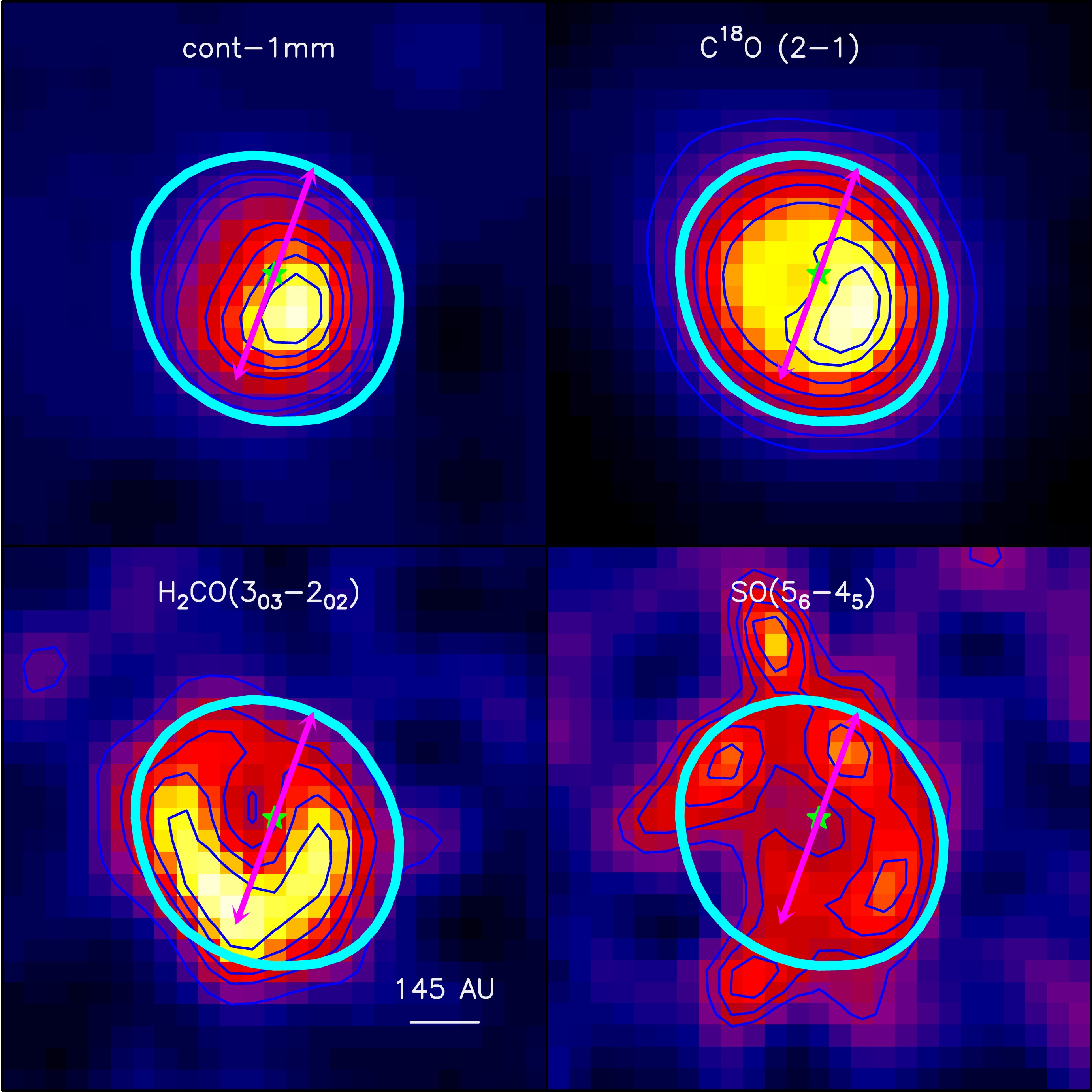News
Sulfur monoxide, a key to unlocking the birth sites of future planets?
NOEMA and IRAM 30-m radiotelescope observations have provided the very first detection of sulfur monoxide (SO) in a protoplanetary disk. The IRAM 30-m radiotelescope observations were performed in the frame of ASAI, an IRAM Large Program led by R.Bachiller (OAN/Spain) and B.LeFloch (IPAG/France). Follow up NOEMA observations were obtained by an international collaboration led by A.Fuente and S.Pacheco (OAN/Spain).
One of the main topics in astrophysics is to look into the origin of the Solar System and, in particular, of the Earth. Young stars and their vicinities are studied in order to figure out the infancy of the Sun and how the Earth was formed. Young stars are surrounded by disks of gas and dust that eventually evolve to form planetary systems. These disks are called protoplanetary disks (PPDs) and evolve from an early phase of gas-rich disk to a debris disk. A debris disk is formed of dust grains and planetesimals (rocky bodies with a size of a few km) and it is, basically, void of gas. Since protoplanetary disks supply the prime material to form planets, the comprehension of their chemistry is of paramount importance not only for planet formation studies, but also to the understanding of the origin of life.
 |
|
|
AB Aurigae hosts a transitional PPD, a disk that exhibits an inner dust hole around a young Herbig Ae star. Previous interferometric observations have shown the dusty disk is highly asymmetric and is marked by a lopsided morphology with the highest concentration of dust towards the southwest. The dust emission peak corresponds to a region of maximum gas pressure, the so-called "dust trap" in which dust particles are hold in on timescales of a few 0.1 Myr to make up the seeds for the formation of planetesimals. Thus far, such morphologies have been observed in a few transitional disks and been interpreted as the birth site of future planets.
In the frame of the ASAI program, a full spectral survey was conducted to determine the chemical composition of this remarkable transitional disk on the verge of forming planets. Throughout the survey, several lines of CO and its isotopologues were detected, including some lines of HCO+, H2CO, HCN, CN, CS and SO. AB Aur appeared to be the only PPD detected in SO thus far. According to S.Pacheco "The detection of this molecule offers a new, unprecedented opportunity to learn about the chemistry of sulfur compounds in the progenitors of planetary system".
 |
| NOEMA images of the protoplanetary disk (PPD) surrounding AB Aurigae. |
High spatial resolution (~1.6''= 231 AU) images of the 13CO (2-1), C18O (2-1), H2CO (30,3-20,2) and SO (56-45) lines were obtained using NOEMA. While most of the molecular lines emission is distributed in clumps within the gaseous ring structure, the dust trap appears to be detected in the dust continuum and in the C18O (2-1) line only. Against all expectations, the SO line shows an almost uniform emission along the ring. Indeed, detailed chemical, excitation and radiative transfer calculations, which were carried out to simulate the physical conditions in the PPD and investigate the sulfur chemistry within the dust trap, show that the high-density conditions characteristic of the dust trap are expected to lead to a rapid freeze-out of SO and SO2 onto the grain surfaces. A.Fuente of the OAN concluded "The absence of volatile molecules such as SO is likely to open a new avenue for the search for birth sites of future planets."
Contact:
OAN: A. Fuente (a.fuente@oan.es)
IRAM: R. Neri (neri@iram.fr)
Laboratories:
OAN, Spain
IRAM, Grenoble
ICMM, Madrid
CNRS, IRAP, Toulouse
Université de Toulouse
IPAG, Grenoble
References:
Pacheco-Vázquez, S., Fuente, A., Baruteau, C., et al. 2016, A&A in press
Pacheco-Vázquez, S., Fuente, A., Agúndez, M., et al. 2015, A&A, 578, A81



